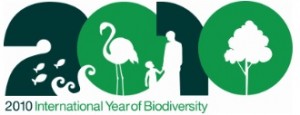MONDAY, 7 JUNE 2010
With 2010 being the Year of Biodiversity, the question of how to measure the current state of biodiversity and monitor changes is particularly relevant. To understand how different sources contribute to our understanding of the range and occurrence of a species, a team of 18 researchers undertook a systematic review of the Galliformes, which includes turkeys, chickens, quails, partridges and pheasants. As a group, these birds have an unusually good historical record as they have been hunted for their meat and their feathers are decorative and have cultural importance.The sources of information on these birds include museums, the published literature, ringing (capture and release), ornithological atlases and trip reports on websites. While museums and literature provide the most detailed information of when and where a species has been recorded, they are not without bias. Both museum and literature data shows clustering in areas that have been studied more intensively and recent literature is biased towards reporting endangered species, which means that changes in the biodiveristy of other species may go unnoticed.
Access to the biodiversity information is also an issue. This is where citizen science projects could come in useful. Initiatives such as the eBird project [1], allow users to report sightings of birds online making the data easily accessible. There are also attempts to highlight regions with few reports, to alleviate the geographical clustering problem and projects that record less 'charismatic' or popular organisms, such as freshwater sponges and lichens.
In line with their recommendations, the authors have published their study in the open access journal PLoS Biology [2].It is hoped that with the participation of citizens over the world, we can build up a comprehensive picture of how biodiversity changes over time and act together to tackle and reverse the environmental issues that face humans and other organisms on Earth.
Written by Wing Ying Chow

